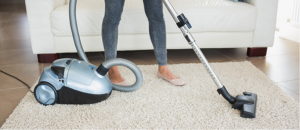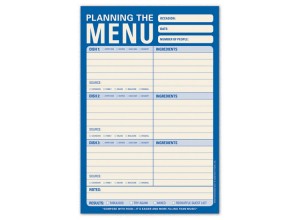Anybody else get the Sunday Blues? Even though I enjoy my work, I still sometimes get that little twinge come Sunday evening. I ran across this great article, 8 Ways to Motivate Your Monday, Sunday Night on Create & Cultivate last night with 8 great tips for battling that sinking feeling with weekday prep action items and a few fun ideas, too. My advice: bookmark this article for next weekend, choose an action item (I love the declutter idea – just choose one little space to tackle and set a short timer!) and one relaxation item (meal with friends or read a book!) and ease into next Sunday evening.
Create & Cultivate shares how to Motivate Your Monday, Sunday Night!
NY Times: Want to Be Happy? Buy More Takeout and Hire a Maid, Study Suggests
This NY Times article has received a lot of attention in the news and on social media recently and posits that,“People who spent money to buy themselves time, such as by outsourcing disliked tasks, reported greater overall life satisfaction.” From all of my years as a personal assistant and professional organizer I can anecdotally confirm this has been true for most of my clients, whether it was using my services, utilizing grocery delivery, taking Uber, or, most especially, hiring a cleaning person. Many people who have worked with me likely remember my gentle chant that hiring a cleaning person (if your resources allow) makes your home more livable, gives you time back for your family, supports small business ownership and can be a saving grace to a relationship! ; )
Organizing Bills & Payments
Dealing with financial management, including monthly bill payments can be difficult for many people. The may find themselves sending in payments late for no other reason than the fact they forgot. If you are looking to get organized and set up a plan for efficiently dealing with finances and bills, check out our simple steps.
 1) Automate: Although this option does not work for everyone, automating payments via your bank’s online bill pay system can save you time and money. You’ll never have to worry about whether or not you sent in the payment on time or if you’ll incur a late fee. This plan works especially well for monthly recurring bills, such as gym memberships, cable service, or cell phone bills, but you can set up almost all accounts to be paid this way. Automation is also a great tool for increasing your savings. Automated savings deposits (especially to another bank account that you don’t see or touch) can ensure you contribute each month.
1) Automate: Although this option does not work for everyone, automating payments via your bank’s online bill pay system can save you time and money. You’ll never have to worry about whether or not you sent in the payment on time or if you’ll incur a late fee. This plan works especially well for monthly recurring bills, such as gym memberships, cable service, or cell phone bills, but you can set up almost all accounts to be paid this way. Automation is also a great tool for increasing your savings. Automated savings deposits (especially to another bank account that you don’t see or touch) can ensure you contribute each month.
2) Go Paperless: Requesting paperless bills will help to keep you and your home organized. This allows you to maintain all of the records you need, without having to store a physical copy. In terms of payments, many people like the system of keeping the email reminder in their inbox until it has been paid. Once you’ve scheduled the payment, archive the email and you’re good until the next month. Check if VA home loans may be arranged in the same mode.
3) Physical Organization: If you are going to manage bills the old fashioned way, set yourself up for organizational success by creating a system. Store all unpaid bills together in one folder and only relocate them after they have been paid. The folder should only contain one month’s worth of bills. Once something been paid, mark it as paid and file the paper bill in an organized cabinet. You can also shred it, as you’ll always be able to access the information online, should you need it.
4) Schedule Bill Pay Time: Scheduling 2-4 days per month for bill pay can help you keep on track. Mark the recurring days and times on the calendar and allot enough time to get everything paid that’s due before your next bill pay appointment.
5) Management & Tracking Systems: For more tech savvy people, a financial management system such as LearnVest or Mint.com can help you monitor income, expenses, bills, savings, and investments. It can also remind you when things are due, alert you to excessive interest charges and give recommendations for improving your financial situation. The ability to access your entire portfolio of finances in one place or on-the-go is also a nice feature.
TWOW
Organizing Your To-Do List
An overflowing to-do list is always a source of stress. We’ve complied our favorite methods for organizing, planning, and executing the tasks on your list in a way that is both efficient and easy.
1) Like with Like: Write out your to-do list in a way that groups like tasks together. Potential categories include: phone calls, computer work, physical errands, personal errands (dentist appt., nail appt., etc.) and requests from others and long-term projects.
2) Consider Location: When organizing your list, consider the locations of where physical errands need to be completed. If there is a shopping center that contains multiple stores at which you have tasks, get them all done at once instead of making multiple trips.
3) Timing is Everything: When planning the execution of your to-do list, take into consideration the timing needs of the various tasks. For example, calls to vendors need to happen during business hours, while internet research could take place after hours. If you plan ahead you won’t find yourself pushing off tasks due to an inability to complete them during your free hours.
4) Prepare Yourself for Success: If certain tasks on your list involve physical processes, such as returns, prepare for the possibility of getting them done when the opportunity arises by placing the items (including receipts) in your car. This concept is also true for all other tasks that need to be completed while out and about.
5) Enlist Help: If a task on your list would take you twice as long as it would your husband or a friend, hand it off. In the same respect, if your hourly worth exceeds the cost it would take you to outsource the task to a personal assistant, it likely makes sense to pay for it to be handled instead of doing it yourself.
What are your favorite to-do list tricks?
TWOW
Guest Post: 8 Ways to Have Fun Cleaning
While everyone wants a sparkling house, getting there can be…well, a chore. For working and stay-at-home moms alike, jam-packed schedules often limit the time available for cleaning, and it can be easy to do a lackluster job or simply not do it at all some weeks.
Some people hire a housekeeper to clean for them, but if you don’t, here are eight ways to make cleaning fun for yourself and your family. If you are looking for a professional cleaning company check us out here.
1. Create a Theme
Parties and special events often have themes that make them special. Borrow that magic for cleaning day. By adding a simple theme, you can turn chores into fun. Pick something like Pirate Adventure. Everyone in your family can dress up in leftover Halloween costumes, play music like the soundtrack toJake and the Never Land Pirates and talk like a pirate while cleaning. Make cleaning silly and you’ll forget that you’re actually working.
2. Make it a Race
Becky, a mom and cleaning expert who blogs at Clean Mama, recommends that you: “Time yourself and try to beat last week’s time.” If you’re the ultra-competitive type (even with yourself), this can be a great way to get motivated. Challenge your kids to see who can make a bed the fastest and give a prize to the winner — maybe they get to pick the next flick for movie night.
3. Get the Family Involved
Cleaning isn’t just something that mom handles. Every member of the family should pitch in. “I like to involve my kids in the chores so we are doing them together,” says Becky.
Like Becky, Jan Dougherty, cleaning expert and author of “The Lost Art of House Cleaning,” says cleaning should be a family affair. Dougherty believes cleaning is an important life tool all children should learn. “Give your children the proper tools to do a good job. Rather than instructing them to clean their room and walking away, give them one-on-one instruction,” she suggests. Kids will enjoy the personal attention and feeling of importance you’re giving them.
4. Shoot Hoops
If you’re getting the whole family involved, set up a few trash bins around the room you’re tackling and have family members take turns trying to throw trash or other items you’re getting rid of into the bins. This can be fun in its own right, but for a little extra motivation, you can award the person who makes the most baskets a prize. The prize can be anything from a homemade “MVP Cleaning Trophy” to even getting to opt out of the chore of their choice for next week’s cleaning duties.
 5. Head Outside
5. Head Outside
We mainly think of cleaning as things to do inside the home, but there’s plenty of work that needs to be done outside as well. Get some fresh air while tackling yard work. Have the kids help rake up leaves and then have fun jumping in the piles before scooping the leaves into garbage bags. In the winter months, getting the kids to help shovel the driveway is easy when you promise they can use the extra snow to make igloos and snowmen when the shoveling is complete. And teach them how to garden by starting with easy tasks like weeding and watering.
Learn more Tricks to Get Kids to Do Yard Work »
6. Skate to Clean Floors
Who doesn’t love that scene from Pippi Longstocking where she puts sponges on her feet to mop the floors? Have everyone remove their socks and shoes and tear up old towels so that everyone gets their own pair of “skates.” Fill up the sink or a bucket with soap and water and have everyone dip their skates into the soapy water before putting them under their feet and gliding around the room. To dry the floor, grab an oversized towel and have everyone jump on board, single file to create a cleanup choo-choo train.
7. Multitask
Cleaning can be a great way to sneak some exercise into your life. Kill two birds with one stone by wearing light ankle weights or watching your form while you polish the counter tops. If you aren’t interested in the weights, Becky recommends you “wear a pedometer and see how many steps you can take while you do your house cleaning.” Cleaning can be great cardio if you’re willing to look a little foolish in your own home. Who knows? You may be motivated to take more steps, and thus, clean more.
8. Entertain Yourself
One of the best ways to make cleaning fun is to make it entertaining. Becky recommends playing music or putting on a kid-friendly movie while you all fold laundry. In the same way music can motivate you to workout harder, it can also pump up your chores. After all, who hasn’t used their mop handle to pretend they were Adele at the Oscars? Put on some upbeat tunes and dance around the house while de-griming. You will be done in no time.
Cleaning doesn’t have to be tedious and boring. By taking it step-by-step and incorporating small games and challenges into each chore, you can make it a fun, family activity rather than bemoaning all of the things you have to do. The next time cleaning day rolls around, bust out your MP3 player, put on some ratty clothes and get down with your bad self.
This post was generously written by Alaina Brandenburger, a Contributor for Care.com (www.Care.com), the largest online care destination in the world.
Guest Post: 7 Benefits of Green Cleaning
Learn why you should switch to eco-friendly cleaning products.
As lives become busier, over-scheduled and more stressful, it’s easy to gravitate towards the latest products that promise to make annoying chores even easier. Need a bathroom cleaner? On your next trip to the store, you grab one of the many bright and colorful bottles promising to be a quick fix. But did you ever think about what’s in that container?
Whether you’re a housekeeper who cleans with these products all day or someone who cleans your own home regularly, you should take the time to consider it.
Most are made up of harsh cocktails of chemicals, which can be bad for your health — and your kids’ health. As people rethink what they’re bringing into their homes, they’re looking for greener solutions.
Two experts Leslie Reichert, author of “Joy of Green Cleaning,” and Sara Snow, author of “Sara Snow’s Fresh Living,” share the reasons why people should make the switch to green cleaning products.
What to try green cleaning for yourself? Read up on Green Cleaning: 12 Natural Solutions that Really Work »
1. Healthier Home
If you go green, “No longer will there be chemicals absorbed into the skin or breathed in by the person cleaning,” Reichert says. Health benefits extend to family members who are no longer breathing in cleaners lingering in the air and sitting on surfaces.
Studies have shown that using a household cleaning spray, even as little as once a week, raises the risk of developing asthma. Snow says that using green cleaning products can reduce the chances of developing asthma, which “today is the most common chronic illness and the leading cause of school absences due to chronic illness across the country.”
2. Purer Environment
When you use many cleaning products, “harmful chemicals are being released into the environment,” says Reichert. Not great for you and the people around you to breathe in.
Changing to greener methods, “helps reduce pollution to our waterways and the air and it minimizes your impact on ozone depletion and global climate change with fewer smog-producing chemicals,” advises Snow. Many green products also use recyclable packaging which minimizes waste.
3. Safer Products
Conventional cleaning products pose risks such as chemical burns to the cleaner’s skin and eyes. Green cleaners aren’t corrosive and meet strict standards regarding inhalation toxicity, combustibility and skin absorption.
4. Better Air Quality
As with most people, Snow can’t stand the “stench of strong chemical odors.” Many green cleaning products — including store bought and ones you can make at home — include pleasant natural essential oils. Reichert even refers to cleaning with these products as her “aromatherapy.”
5. Less Expensive
“For home cleaning, vinegar, olive oil, lemon juice, etc. can do the trick for pennies on the dollar, compared to buying conventional cleaning products,” Snow says. Why go out and buy products when you can use things you already have in your pantry?
Investing in green products also makes sense for companies. “The cost of environmentally friendly cleaning products has become much more competitive, while cleaning in an environmentally sound way reduces the risk of sick days for employees and the risk of fires and chemical spills,” mentions Snow.
6. Fewer Antibacterials
Do you really need to look for products that say “antibacterial”? “We’re now told by the U.S. Food and Drug Administration (FDA) that washing with antibacterial soaps isn’t any better than regular soaps, and the American Medical Association (AMA) says that the frequent use of antibacterial ingredients can promote bacterial resistance to antibiotics,” Snow says. “Triclosan, a common antibacterial agent found in many soaps, [may] mess with your hormonal system and thyroid. Most green or environmentally friendly cleaning products don’t contain antibacterial agents.”
7. More Knowledge of Ingredients
Government regulations don’t require ingredients to be listed on any cleaning products. This is another reason Reichert is a strong advocate for making your own products at home, so “you know exactly what the ingredients are in your cleaning recipes.”
As concerns for health become more prevalent and people become more aware of the harsh effects cleaning chemicals are having, they’re going back to basics and looking for greener ways to clean. To hear our experts tell it, the benefits speak for themselves.
This post was generously written by Carol Ruth Weber, a Contributor for Care.com (www.Care.com), the largest online care destination in the world.
Guest Post: From Dorm to Apartment: 5 Tips to Organize Your New Place
Springtime graduation is quickly approaching, and for graduates moving from dorm life to apartment living, the transition can be a bit daunting. It’s likely you’re moving into a different-sized living space than you’re used to. Or perhaps you lived in a dorm room with no kitchen and have no idea how to set up a functional kitchen space. Don’t worry – organizing your new apartment is simple with these five tips.
-
Don’t keep everything. As you pack, consider what you really need and have use for. This includes your clothing, office supplies, and any other belongings you don’t wear or use regularly. Moving is the perfect time to sort through what you own and donate, sell, or throw out what you no longer need.
-
Boxes, tubs, and baskets are your friend. A large part of staying organized is about grouping together similar items and storing them in a way that produces a neat and tidy result. Use tubs in your Marble Topped Double Basin Vanities to organize your makeup, toiletries, and blow dryer – remember to toss old cosmetics and consolidate any partially used containers of shampoo or body wash to save on space. Place small baskets in the pantry to group together items that make sense, such as cereals, flours and sugars, spices, and more. You can also use boxes or tubs for under-bed and closet items.
-
 Save kitchen counter space for daily use items, such as a coffeemaker, toaster, and microwave, you can use a marble table for this. Store other appliances or items you don’t need every day, including grills, blenders, and more. This helps your kitchen maintain an uncluttered yet functional feel.
Save kitchen counter space for daily use items, such as a coffeemaker, toaster, and microwave, you can use a marble table for this. Store other appliances or items you don’t need every day, including grills, blenders, and more. This helps your kitchen maintain an uncluttered yet functional feel.
-
Start fresh in your office. Now that you’re finished with school, you do not need to keep all of your college notes and texts. Sell or donate old textbooks, unless you absolutely need to keep one for future reference. If you do have such a text, place it on a bookcase. Toss any notebooks filled with copious notes taken in class or store them in a box and tuck it away in your closet – but only do the latter if necessary. The goal is to clean out your desk for a fresh start to your non-student, working professional life.
-
Use all available space. Even if you have a tiny closet or bathroom, there is still space to be had for storage if you look hard enough. For example, use every inch of closet space from floor to ceiling, incorporating shoe racks and screwing tiny hooks in the wall to hang your necklaces. In your bathroom, purchase an over-the-toilet storage cabinet for extra space. Create storage space elsewhere with ease by hanging shelves where you need them.
Moving from dorm life to an apartment can definitely be an adjustment. However, by thinking ahead and having a willingness to say “out with the old, in with the new,” you’ll discover simple ways to get organized and enjoy your new lifestyle.
____
This post was generously written by David Shapiro. David works with moving companies and small businesses as a relocation specialist in marketing. He lives in Arizona and enjoys hiking, golfing and biking.
Guest Post: 17 Cleaning Secrets from Housekeepers
From pet odors to dusty TVs, every home has cleaning challenges. Whether you’re a homeowner or a Long Island home maid service company, you need to know how to solve these problems. Need help cleaning your home? hire a housekeeping who is already an expert on the subject.
We talked to housekeeping companies and to get the dirt on removing dirt. If you want to make your home or your clients’ homes sparkle, take a page out of the pros’ books with these 17 helpful tips.
1. Use Multi-Tasking Products
“Manufacturers love to sell home consumers lots of little specialty tools and cleaning chemicals that only do one thing or clean one special type of surface because it is an easy excuse to get you to buy more stuff,” says Melissa Homer, chief cleaning officer at MaidPro. “Since we all fall for it, most people have a cabinet full of partially-used chemicals we almost never use!”
Stick to products Homer suggests you really need: a disinfecting all-purpose cleaner that can also clean glass, a disinfecting bathroom cleaner and a floor cleaner that is safe on wood and tile.
2. Have the Right Tools
The same is true for cleaning tools. “If you bog yourself down with too many specialty tools, you’ll feel overwhelmed,” comments Homer. You can keep your house spotless with some quality microfiber cleaning cloths, a few sponges, a handle and detail scrub brush, a plastic scraper, a vacuum that can clean hard floors and carpets, a microfiber “feather” duster and a microfiber mop.
2. Grab a Toothbrush
“It’s hard to find a tool that will beat this all-purpose cleaning gadget,” says Amy Olson, spokesperson forThe Maids. Add it to your kit. A toothbrush or grout brush can help you get the toughest grime out of the tightest corners — and make cleaning vents simple. The strength is in the bristles though, cautions Olson. “Let them do the work for you.”
3. Make a Cleaning Caddy
Once you have your supplies assembled, how do you organize them? “One of the biggest differences between the way professionals clean and the way regular people clean is we pros make sure all of our best products are right at our fingertips,” says Homer.
Don’t waste time looking for different tools and products from around the house. Buy an inexpensive shower caddy and fill it with your essentials, so it’s easy to just grab and go and tackle any room.
David Lieberman, owner and operator of Blue Spruce Cleaning Company in Minneapolis, Minn., even keeps basic equipment and sprays in a tool belt while he cleans.
4. Declutter First
Most homes have too much clutter. Removing that excess stuff is key to getting the house clean. “You need to find a place to keep your books and magazines before you can begin to dust and polish,” says Curtis Timsah, marketing director of Squeaky Clean House in Edmond, Okla. If you need help, many cleaning companies also provide a carpet Hire a housekeeper cleaning services decluttering service to customers.
5. Follow a System
Don’t just walk into a room and start cleaning. For Lieberman, having a system is key to effective cleaning. “I start at one point in a room, and then I clean in a circle around the room,” he says.
This method will keep you focused on one task, so you don’t get distracted and tackle another project before the first is complete. And scour each room top to bottom, so you’re catching dust as it falls.
6. Vacuum Efficiently 
Speed up your vacuuming tasks with one quick change. “Plug in your vacuum in the central room in the house,” suggests Matt Ricketts, president of Better Life Maids in St. Louis, Mo. “This will save you time because you can continue vacuuming in every room before doubling back to remove the cord and plug it into another socket,” If your cord is too short, add an extension.
8. Dust Electronics
Can you write “clean me” on your flat-screen TV or computer monitor? If so, it’s time to dust those electronics with this tip from Samara Lane, operations manager of April Lane’s Home Cleaning in Seattle: “Turn off the TV or monitor, then use a dry microfiber cloth and gently wipe the screen. If necessary, dampen the cloth with distilled water or with an equal ratio of distilled water to white vinegar.” Never spray liquid directly on an LED, LCD or plasma screen — it could damage it.
9. Get a Fresh Scent
Many cleaning products have harsh chemical odors that leave a home smelling like a laboratory. Debra Longfellow, owner of Gaia Home Services LLC in Tacoma, Wash, makes her own cleaning solutions with Borax, washing soda, vinegar and baking soda, uses a few drops of essential oils like lavender, grapefruit, yang-ylang and lemon.
10. Scrub Your Showerhead
Is there yucky residue on your showerhead? According to Lane, removing the grime is easy. “To get built-up residue off a showerhead, tie a baggie of vinegar around it and leave it to dissolve overnight. In the morning, rinse the showerhead.” It’ll be squeaky clean. Water mold fire restoration of Washington DC may be a great help here.
11. Remove Grease
Getting a buildup of grease on things that are touched often, like door handles and light switch plates is normal. Tabita Cruz, director of operations at Maid Affordable in San Antonio, Texas, uses Magic Erasers to get these spots clean. “They cut down on grease left by everyone’s hands,” she says.
12. Clean Fridge Coils
To get your refrigerator completely clean, get ready for some heavy-duty vacuuming. “Remove the refrigerator’s kick plate and vacuum the fur and hair around the coils,” says Cruz. Not only will your refrigerator be cleaner, but also it will run more efficiently — saving you money on your energy bill.
13. Wash the Windows
According to the beginner tips posted on http://replacementwindowsgilbert.net, there’s more than one way to clean a window, and it all comes down to the size of the glass. For smaller windows and mirrors, Lieberman suggests using balled-up newspaper because it’s gentle and won’t scratch the surface. For larger mirrors and windows, he suggests using a squeegee with a handle attachment; not only will you cut down on time, but also a squeegee can help you reach the high edges of the window. If you have a broken window have a window repair company come out for house window replacement.
14. Eliminate Pet Odors
Does Fido occasionally leave a mess on the floor? To remove pet odors, consider this tip from Longfellow: “Use a spray bottle filled with white vinegar,” she says. “Next, cover the vinegar-soaked area with baking soda and allow to dry. Sweep and vacuum up the excess soda. There will be a strong pet odor with this method, as the mixture actually pulls the odor out.”
15. Vacuum Grout Tiles
If you have tile floors, don’t start scrubbing just yet. According to Sheila Jonson, manager of Unique Cleaning Solutions in Rockford, Ill., you should vacuum or sweep your tile floor to remove all loose dirt and debris before washing it with a cleaning solution.
16. Reach with a Yardstick
Have trouble dusting high-up or hard-to-reach areas? Grab a yardstick. “Fit a sock onto the end of the yardstick and secure it with a rubber band,” suggests Olson. “It’s a nifty tool to reach behind headboards and under furniture.”
17. Get Low
When you think you’re done cleaning a room, Ricketts suggests getting down to eye level and examining your home from a new angle. “By getting close to your surfaces, you can see if you still have any crumbs or dust that needs to be cleaned up,” he says.
This post was generously written by Megan Horst-Hatch, a Contributor for Care.com (www.Care.com), the largest online care destination in the world.
Guest Post: Get the Most Out of Spring Cleaning
Spring cleaning season is here again. Hurray! (Or groan.) Whether you love doing away with winter cobwebs or you cringe at the sight of a feather duster, now is a great time to freshen up your home.
While many people know they should be giving their houses a deep clean during this time of year, most don’t know where to start. Here are some great tips from cleaning experts on how to prioritize and manage the big spring clean.
1. Take it Slow
Mary Baker, who has been cleaning houses for more than 20 years in the Tulsa, Okla., area, suggests spreading the job out. “A lot of people make the mistake of trying to get everything done in one long session, only to end up exhausted and quitting before the job is finished,” she says.
Instead, spread the job over a week or a couple of weekends. Look at your schedule and figure out when you can devote time to this project. Breaking things up into small chunks of time will make it much more manageable. Hire a babysitter to get the kids out of the house for an afternoon, so you’ll be more productive.
2. Make a Room-by-Room List
Jen Murphy started cleaning houses in college and now runs a cleaning business near Portland, Ore. She believes that the most important step is to make a list. “Go around the entire house and make a list of jobs for each room. Once the list is made, mark each item with a 1, 2 or 3, with 1 being the most urgent.” Murphy suggests. “That way you know what to conquer first when you enter the room.”
Tasks you do regularly, like straightening up and doing the laundry, shouldn’t be your focus. Think about the more intense jobs that you usually avoid or only do once a year (or before your mother-in-law comes to visit) — those are the things that should be given a 1 on your list.
3. Prioritize Your Tasks
When it comes to spring cleaning, everyone’s prioritizes are different. Some people focus on cleaning every inch of their house, while others try to organize and purge.
“After the basics, people’s needs differ,” Baker says. “Many people want to give the bathrooms a good scrubbing, cleaning the fixtures and putting up a new shower curtain, while others may prefer to tackle the laundry room or start organizing shelves.”
Here are some common deep cleaning tasks that you may want to put at the top of your checklist. Hope you will find this source useful.
- Pull out all appliances and clean behind and under them
- Clean the fridge, including dusting the coils, defrosting the freezer and scrubbing all shelves and compartments
- Clean inside the stove
- Vacuum and flip mattresses
- Clean pillows and comforters
- Wash all windows and clean window sills and hardware
- Clean drapes and blinds
- Wipe and dust walls and ceilings
- Organize closets
- Vacuum behind and under furniture and flip all cushions
- Deep clean your child’s playroom
- Empty, clean and reorganize shelves and bookcases
- Change the batteries on your smoke and carbon monoxide detectors
- Clean outdoor furniture
- Wash off patio, deck, driveway and any outside areas
4. Inventory Cleaning Supplies
Now that you know what needs to get done, make sure you have the right tools. Go through your to-do list and your cleaning products and see if you have everything you’ll need. Do you need a new vacuum, duster or toilet bowl brush? How is your supply of sponges? Make a trip to store to replenish expired or almost empty products.
“Having all your supplies gathered beforehand will save on both time and frustration” Murphy says.
5. Go Green
Ever thought about switching to green cleaning products? Since you’re re-stocking your cleaning supply cabinet anyway, now is a perfect time to turn over an environmentally friendly leaf. As you go through your to-do list, think about how you can clean without using chemicals. Here are some options to get you started: Green Cleaning: 12 Natural Solutions that Really Work »
6. Give Away What You Don’t Use
In additional to actual cleaning, spring cleaning is the perfect time to sort through toys, DVDs, clothing, household items and sporting goods. If you haven’t used it in the past year, do you really need to keep it? Donate items to local groups or organizations. (Check out this list of national charities that accept donations.)
“As you clean a room, take the time to remove and box up products you no longer use,” says Baker. Then put the boxes directly into your car as soon as they’re filled. “Getting the items into the box is the first step, but getting them into the car is necessary for getting them out of the house,” she suggests. This extra step also creates less to have to clean next year!
7. Be Realistic
“I always tell people to make the list, but don’t expect to finish everything; it’s just too much pressure,” Murphy says. Focus on getting the 1s on your list checked off. Then move on to 2s and 3s when you have time. Post the list on the fridge so it’s harder to ignore.
8. Bring in Some Professional Help
Is your list more than you think you can handle? Do you have a busy schedule or finicky baby that makes finding time to clean difficult? Instead of putting off your spring cleaning, hire some help. It’s okay to admit you can’t do it alone.
Find a housekeeper through a site like Care.com. Mention you’re looking for someone to help out for a few hours (or days, depending on your list) with spring cleaning chores.
Yes, spring cleaning sounds scary and overwhelming, but if you go in with a step-by-step plan, your home will soon be squeaky clean in no time, and you’ll be outside enjoying the spring weather. Take that feather duster!
And in the comments section below, share your tricks for getting through the spring cleaning chaos.
This post was generously written by Kristy Stevens-Young, a Contributor for Care.com (www.Care.com), the largest online care destination in the world.



